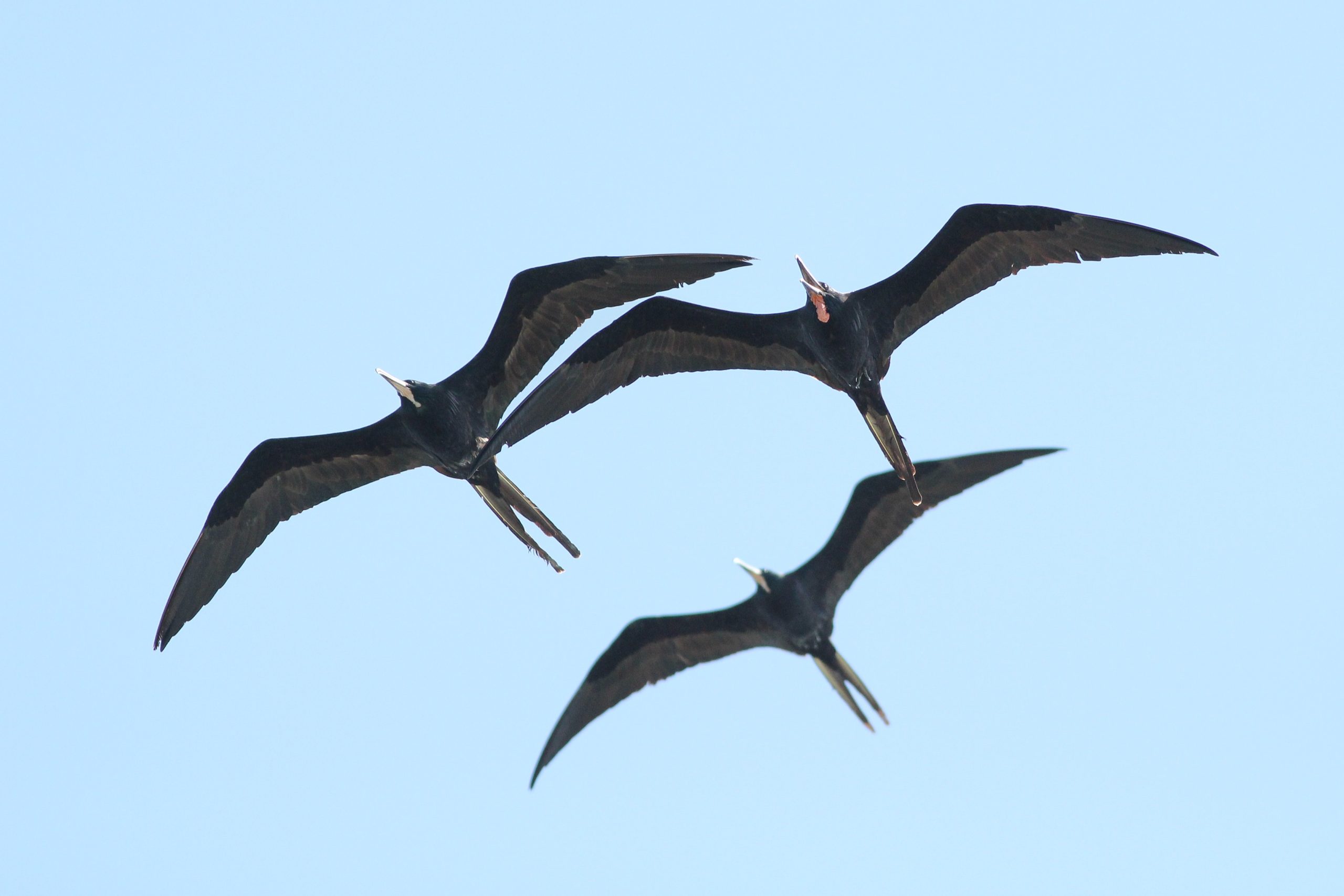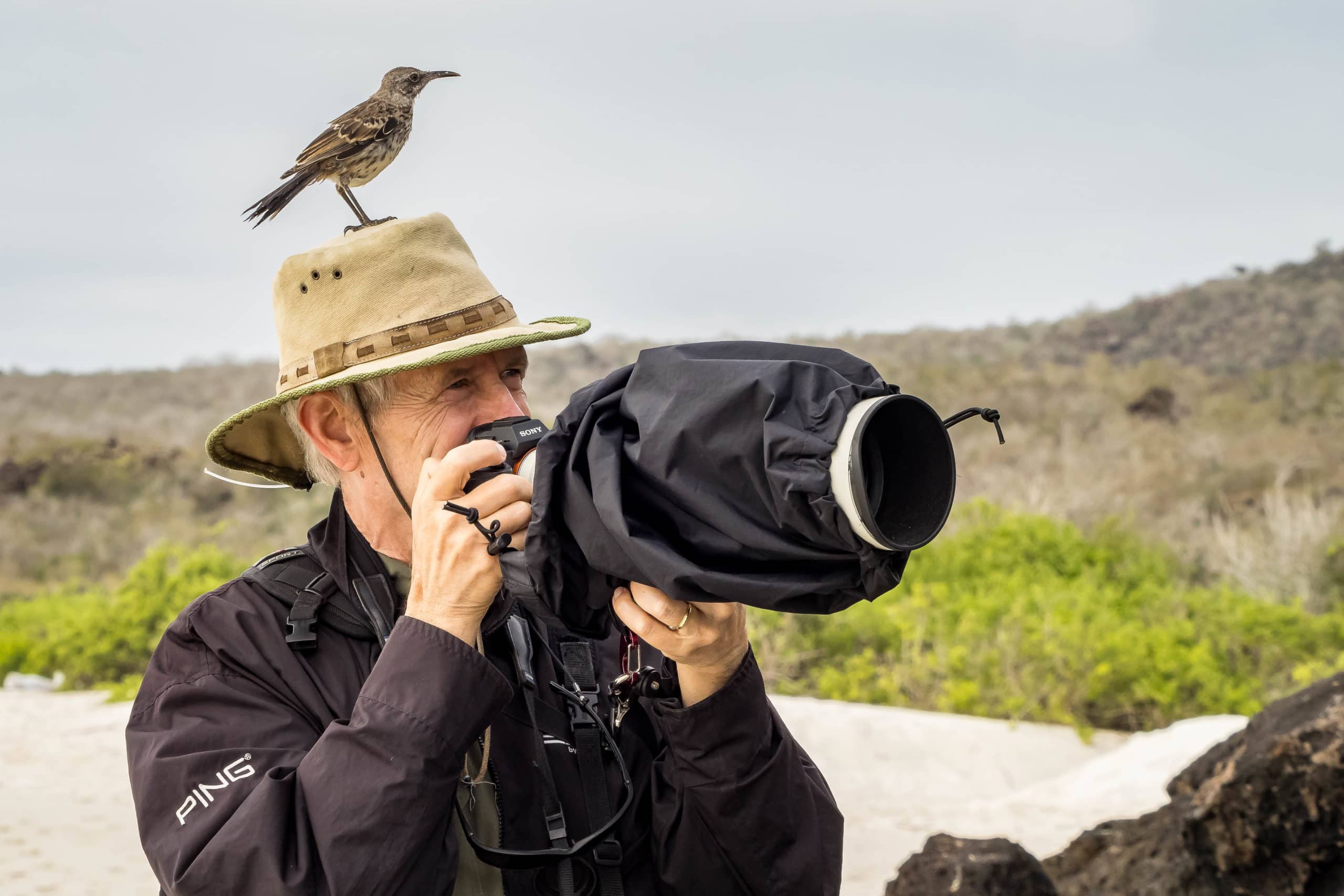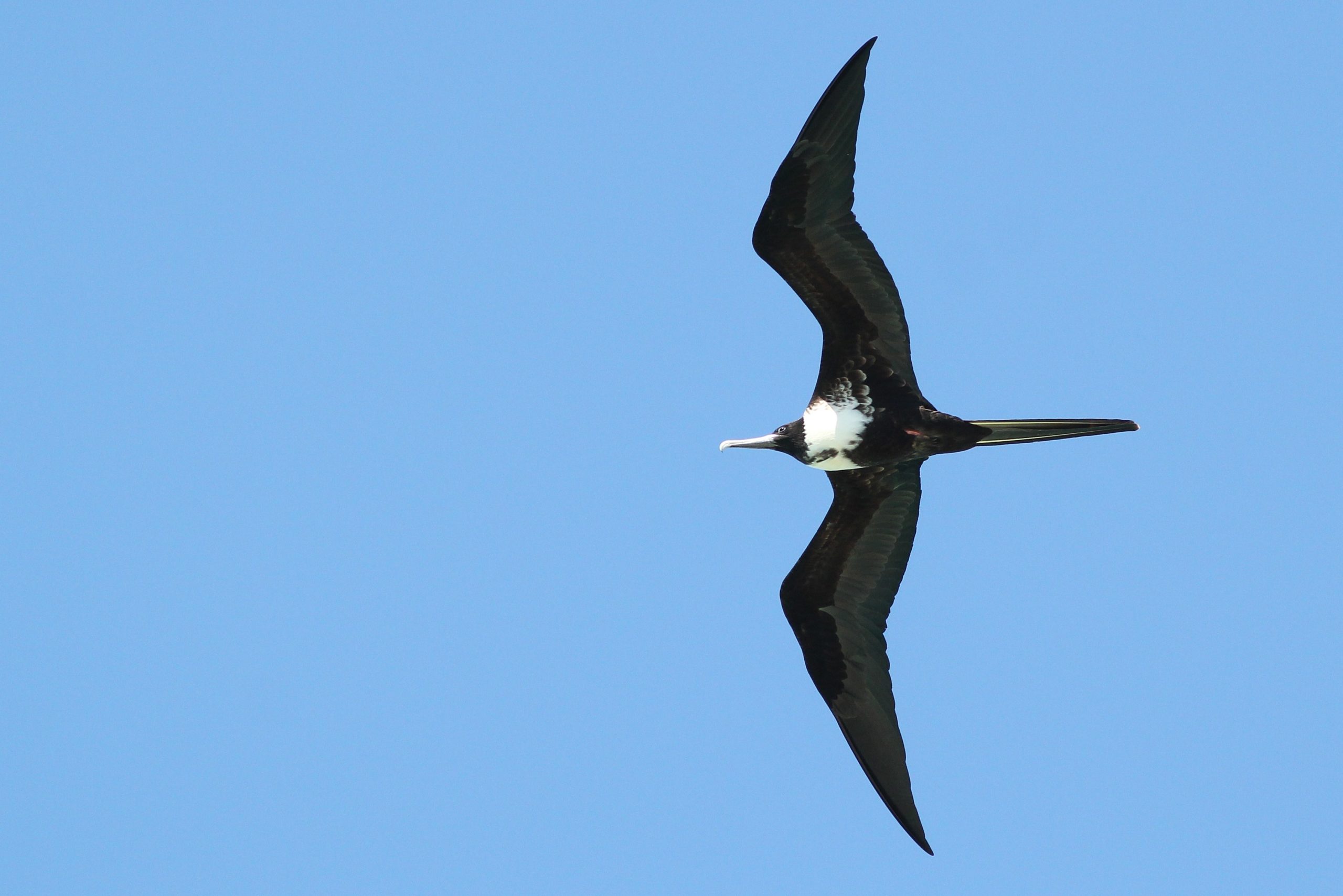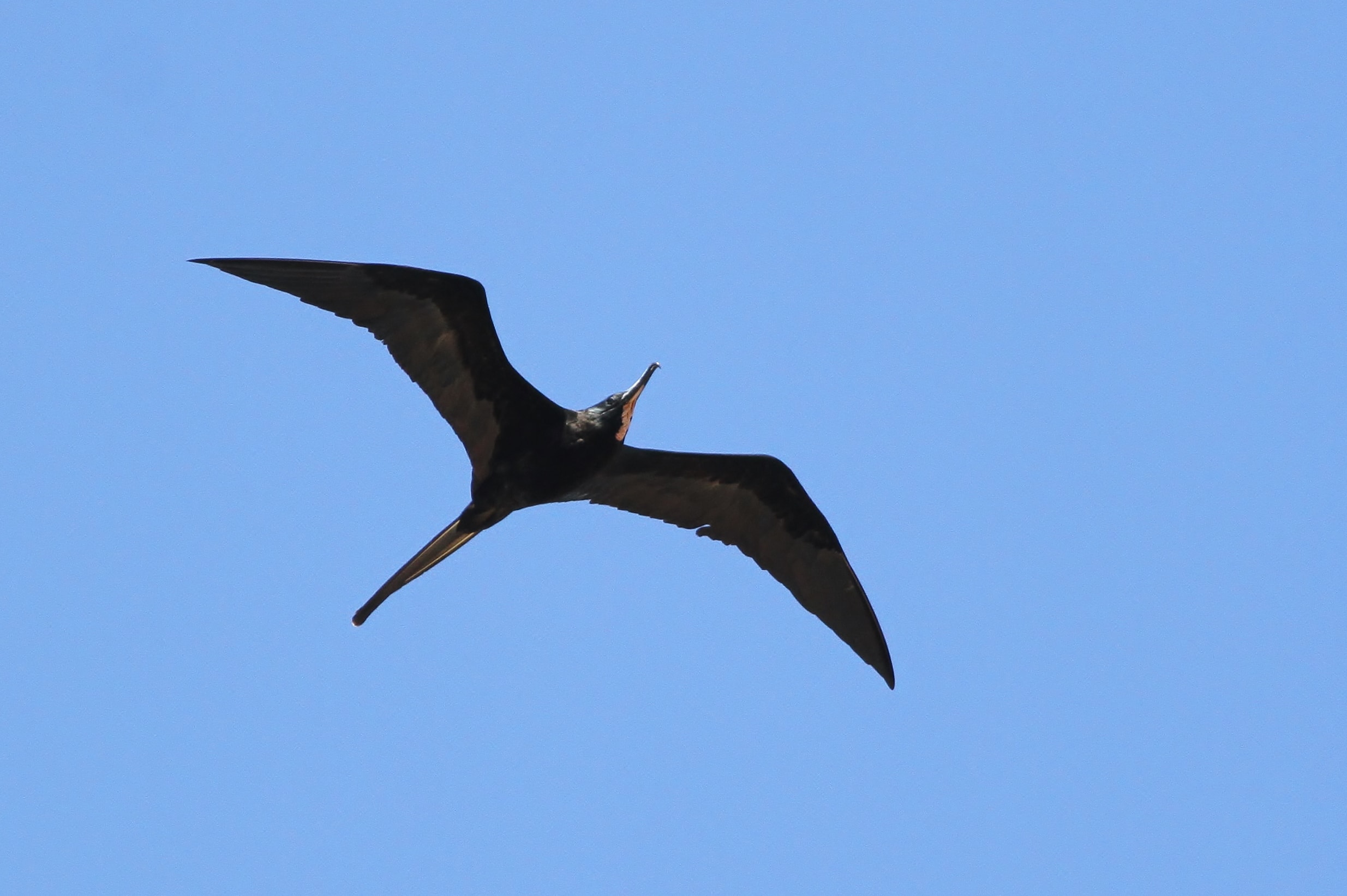
SPECIES SPOTLIGHT – Magnificent Frigatebird
Apr 13, 2020 | by Alex Lamoreaux
The Magnificent Frigatebird is one of the most well-known seabirds throughout the American tropics. Most birders recognize this species for the inflatable red gular sac shown on adult males; but their remarkably long wings, forked tail, and pirate lifestyle make this species an incredible sight. ‘Magnificent’ certainly isn’t an understatement! In fact, frigatebirds have the longest wings compared to body weight of any species of bird! Their sheer size, ominous presence, and the powerful yet graceful behavior in flight make this species a favorite for us and our clients.

Adult male (left) and adult female Magnificent Frigatebirds (Photo by Alex Lamoreaux)
The Dry Tortugas is home to the only breeding location for this species in the United States, although they breed throughout the Caribbean. Our ‘Dry Tortugas: Seabirds & Spring Migration‘ and ‘Florida & Dry Tortugas‘ tours provide excellent opportunities to be in the presence of these spectacular birds. At Fort Jefferson in the Dry Tortugas sometimes the frigatebirds fly so low over the island you can have trouble fitting the entire bird in your camera frame!

Adult male Magnificent Frigatebird (Photo by Alex Lamoreaux)
Frigatebirds are unique among seabirds in that they have fairly obvious plumage differences between adult male and female, as well as having a distinct immature plumage. All of these differences can be seen well in the field, adding another level to your birding experience. The adult male Magnificent Frigatebird is glossy-black on both its upperside and underside, with a hint of purple and green on its back under ideal viewing conditions. During the breeding season, the adult male’s gular sac is bright red in color and is quite noticeable even when not inflated. During the non-breeding season the male’s gular sac is an orange or yellow color.
The adult female is similar to the adult male, but has a broadly white breast and black belly. Females and immatures lack the inflatable gular sac. Immature frigatebirds remain in their juvenile plumage for 4 to 6 years and then molt into their respective adult plumage. The immature frigatebird is similar to the adult female, but the white on their undersides extends to their belly. Most notably, immatures have a white head. They also show a brownish tinge to their upperwings, not the glossy black of adults.

Adult female Magnificent Frigatebird, with an adult Least Tern escorting it away from the tern’s nesting colony – quite the comparison! (Photo by Alex Lamoreaux)

Immature Magnificent Frigatebird (Photo by Alex Lamoreaux)
Despite being a seabird, the frigatebird does not have a protective waterproof coating on its feathers. Frigatebirds cannot actually dive into the water to catch a fish or squid for itself. Instead, the frigatebird relies on a classic Caribbean lifestyle – piracy! They either pluck prey from the surface of the water with their long bill or take on a more aggressive approach at securing a meal. The Magnificent Frigatebird is kleptoparasitic, meaning that it is very willing and able to chase down and steal food from other seabirds such as terns, gulls, and tropicbirds. The frigates will ruthlessly terrorize another bird for its food until the smaller bird either drops or regurgitates its meal, allowing the frigatebird to snatch the food out of midair. If I were something like a Royal Tern with a recently-caught fish, and saw a squadron of frigatebirds coming towards me, I might throw up my lunch too!
- Adult female Magnificent Frigatebird (Photo by Alex Lamoreaux)
- Adult female Magnificent Frigatebird (Photo by Alex Lamoreaux)
- Adult male Magnificent Frigatebird (Photo by Alex Lamoreaux)



































